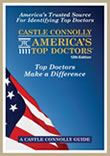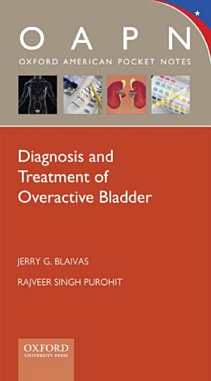Adult Diapers & Pads
Introduction
The goal of any therapy for incontinence is to restore normal urination and to avoid the use of indwelling catheters, pads or appliances. While this is a realistic goal and can be obtained for the majority of patients, there are some for whom perfect urinary control is either not possible or not desirable.
Why would a person prefer to remain incontinent and use diapers or pads?
No one prefers to be incontinent and use pads or diapers, but many patients have mild enough degrees of incontinence that they really don’t want to undergo surgery, take medications or undergo intensive behavioral modification programs for a problem that they consider to be a mild one and one to which they’ve grown accustomed.
If you have incontinence that is not completely controlled, for whatever reason, there are a number of different methods available for keeping you confidently dry. For mild degrees of incontinence, a piece of absorbent toilet tissue or paper towel placed as a liner for your underwear may suffice. Unfortunately, many people use this method, even if it doesn’t suffice. They stuff their underwear with tissues and towels in a desperate attempt at staying dry, but the amount of urinary loss cannot be controlled by this method. Out of ignorance (with a little help from unsympathetic insurance companies and some health care professionals), they think that nothing else can be done and they simply give up and do the best they can, changing their clothes frequently throughout the day. Some become social outcasts because wherever they go, the odor of urine is ever present. Others simply never leave home and lead lives of lonely isolation. The pity of it all is that, even for people whose incontinence cannot be cured or treated, there are ample methods for managing the urinary loss. That means that, no matter how bad or uncontrollable the incontinence is, there are products that you can use which will either absorb the urine or divert it into a collection device so that your underwear or clothes will not get wet. There will be no odors, and no-one will even know you have the problem unless you choose to tell them.
The main problem, though, is that not very many people know about this. Most doctors, even urologists and gynecologists don’t know about these things. Most nurses don’t either. But some do, and, if you are having difficulty managing incontinence, it would be best to seek them out. They are not easy to find. If your doctor has not been helpful in this regard and no-one in his office is helpful either, the chances are that somewhere in your community there is an ostomy nurse; if you’re lucky there is a continence advisor.
A continence advisor is a specially trained health care professional, usually a nurse, who is expert on many different ways to manage incontinence, including, intermittent catheterization and the use of pads and appliances.
Whether or not you can find a competent ostomy nurse or continence advisor, there are many common sense ways of managing the problem. The most ubiquitous method is the use of absorbent pads. There are also a number of brand new products on the market that attempt to block the urethra so that urine simply can’t get out of the body using adhesive materials applied directly to the meatus (the outside opening of the urethra). There are new urethral inserts, little tubes that go into the urethra blocking the flow of urine. These also must either be removed each time you urinate. For men, there are a number of condom catheter devices. These are plastic or latex materials that are placed around the penis as a sheath.
For patients that are unable to urinate at all or don’t empty their bladders completely enough, there are only two currently available options, intermittent catheterization and an indwelling bladder catheter. A newer device, called the Spanner, is an indwelling urethral stent that is placed deep into the urethra but does not come out of the penis and therefore is not attached to a bag. It allows patients to urinate with continence but must be changed every 4 weeks.
Adult Diaper and Absorbent Pads
The sale of adult diapers and absorbent pads to manage urinary incontinence is reportedly a multi-billion dollar industry. Why would that be? There are two possible reasons. Firstly, too many people still have the mistaken notion that there isn’t very much that can be done for incontinence and that pads are about all they can do to keep themselves dry. Sadly, this is undoubtedly one of the reasons. Secondly, people do not consider their incontinence to be enough of a problem to warrant further treatment, because the pads work just fine.
No matter what the reasons, absorbent pads are still probably the most common form of treatment for people with urinary incontinence. Pads come in a wide array of assortments, sizes and types. They range from minipads and panty liners to adult diapers. The former can generally hold 5 or 10 oz. and protect leakage to your outer clothing; the latter can hold 100 ounces or more.
Incontinence Associated Dermatitis
(Diaper Rash in Adults)
What Causes Diaper Rash in Adults?
Incontinence associated dermatitis, or diaper rash occurs in between 5.6 to 50% of adults with incontinence. For patients with overactive bladder (OAB) causing incontinence (urge incontinence) or for those who have an OAB combined with stress incontinence (mixed incontinence), preventing and management is critical in improving quality of life and potentially preventing life-threatening infections.
What are the Risk Factors for Diaper Rash?
Risk factors for development of dermatitis secondary to urinary incontinence include exogenous and endogenous factors.
Exogenous factors include the length of time and amount of exposure to urine. The urine itself creates a warm, moist environment that enhances the growth of microorganisms and enhances irritation from heat and sweating. Other exogenous factors that impact the development of a rash are the presence of fecal incontinence, types of diapers used and frequency of diaper changes. Infrequent diaper changes will increase the length of time and volume of exposure of urine to the skin.
Endogenous factors include the patients age, gender, immune status and the presence of other skin diseases. The stratum corneum, the outer layer of the epidermis, provides a critical barrier to microorganisms. When skin is exposed to moisture, permeability increases and the barrier function decreases. Older patients tend to have different composition of this layer than younger patients that makes them more susceptible to maceration and dermatitis when soaked with urine. Furthermore, older patients who develop incontinence associated dermatitis are also at increased risk of developing a secondary skin infection.
The presence of previous skin diseases may decrease the body’s natural resistance and more easily cause maceration (peeling). In the elderly, diaper rash may also mask underlying skin conditions. In one prospective study of 46 patients with adult incontinence associated dermatitis, 63% had candidiasis, 16% irritant dermatitis, 11% eczema, and 11% psoriasis.
How do you Treat Diaper Rash in Adults?
With skin moistened by urine increased skin pH increases bacterial colonization. Secondary infection with candida or bacteria may also occur. Ideally, treatment for incontinence associated dermatitis includes permanently correcting the incontinence. Because this is not always possible, supportive treatment should include minimizing the time and amount of urine in contact with the skin. Urine in contact with the skin leads to maceration of the skin which, in turn encourages infiltration by candida or bacteria.
The use of a skin care protocol by providers (in nursing homes, for example) or by patients decreases the risk of dermatitis and secondary infection. This protocol may include a fixed plan for frequency of pad or diaper changes, the amount of barrier used, routine examinations to diagnose early dermatitis and periodic cleaning. Gentle skin cleaners may decrease the fecal bacterial load or the amount of other pathogenic types of bacteria.
Hypoallergenic diapers or pads should be used and changed frequently which decreases the length of time the skin is in contact with urine and, consequently, decreases the risk of maceration and secondary infection. The addition of diflucan (fluconazole) or antifungal creams are useful because patients may also have a concomitant candidal infection. In patients who develop a secondary candidal infection, in one study antifungal agents cured 32% of patients, improved 56% and left only 12% unchanged or worsened. Because of compromised skin integrity secondary bacterial infections can also occur and should be aggressively treated with appropriate oral antibiotics. When bacterial infection is suspected, it is importance to culture the skin before treating with oral antibiotics given the growing incidence of resistant Staph Aureus, vancomycin resistant enterococcus, and other gram negative organisms that can be isolated.
In addition to frequent diaper changes with a hypoallergenic, high capacity diaper that contains minimal irritating fasteners and appropriate antimicrobial therapy, skin barriers may be useful. Using a product that replicate skin pH as close as possible a moisturizer with skin protectant helps. Products that provide a barrier function include zinc oxide which can be combined with an antiseptic formulation. Skin moisturizers which also provide a barrier between the skin and the diaper, such as vaseline, also decrease the incidence of dermatitis.
Skin care and deodorizing products
Believe it or not, most of the time, normal urine does not have an odor and, in small volumes, does not irritate your skin. However, sometimes normal urine does have an offensive odor and, in some people it may be very irritating to the skin. No matter what, though, if urine is allowed to remain on clothing, pads or appliances, bacteria will grow and they do have an offensive odor and they do irritate the skin. So the best way to prevent odor and to be kind to your skin is to be sure that you change your pads frequently enough.
How frequently should I change pads?
As a general rule you should change whenever they seem more than damp or moist. When in doubt, let your nose or your skin be your guide. No matter how often you change, though, there may be an offensive odor or your skin may become irritated. Fortunately, if this happens to you there are many effective deodorizing sprays and tablets and there are many skin care products.
How will I ever choose among all the options for incontinence?
The best advice we can give is trial and error particularly under the guidance of a knowledgeable and highly trained physician or nurse. If you lucky, your local pharmacy carries enough incontinence products for you to experiment with; if not, complain to the pharmacy that they don’t carry enough products and get the Resource Guide from the National Association for Continence (NAFC). This guide has a description and picture of almost every imaginable product. The Resource Guide is published annually by the NAFC and lists over 1000 products for managing incontinence. It categorizes them into 12 categories including disposable and re-usable absorbent pads and diapers, external urinary devices such as condom catheters, penile clamps and pouches for men. Also listed, are leg bags and other devices for storing urine and skin care and deodorizing products.
Conclusion
For patients with urinary incontinence or difficulty urinating, the goal of treatment is to restore normal functioning but this is not always possible. Further, for some people, the symptoms themselves are of so little concern that they prefer the use of pads or appliances to manage their problem. Fortunately, modern technology has advanced to the point where nearly every person can be managed to his or her own level of satisfaction. For some, this means surgery or medications. For others, pads and appliances are just fine. For still others, intermittent self catheterization is what works best.
Why Choose a Uro Center Urologist in New York?
The urologists at the Uro Center in New York are experts in their field, bringing academic and research based innovation to the clinical forefront. Our urology team specializes in areas of treatment such as: robotic surgery, reconstructive urology, men’s health & infertility, kidney stones, urologic oncology, penile implant surgery, urethral stricture, BPH, Urinary incontinence treatment, Mesh complications, Enlarged prostate treatment, Urodynamics, vesicovaginal fistula and female incontinence in New York.
Request an Appointment











